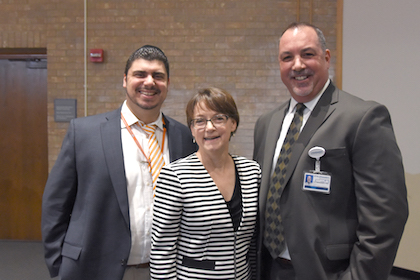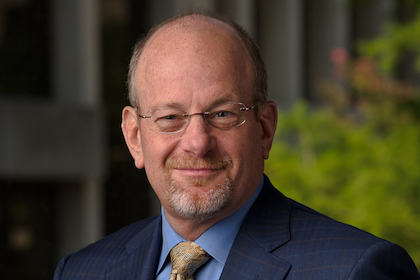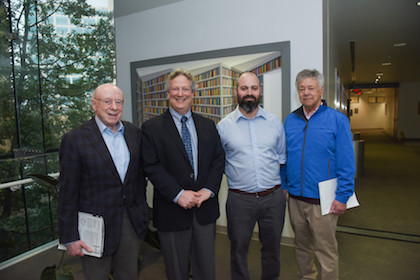Health professions students dive into communications issues at symposium

A replay of the conversation between retired US Airways pilot Capt. Chesley “Sully” Sullenberger and air traffic controllers the day in 2009 that he crash-landed a jetliner in the Hudson River off Manhattan held the audience at rapt attention. The ground personnel at New York’s LaGuardia Airport were certain the plane could make it back safely to the airport, but the captain was not.
“Communication is key to a good outcome,” said Dr. Oren Guttman, Assistant Professor of Anesthesiology and Pain Management, in discussing the conversation as an example of miscommunication. The talk led off the Quality Assurance and Improvement in Collaborative Practice Symposium, an inaugural event put on by the UT Southwestern School of Health Professions in June.
The aim of the daylong event was to bridge educational gaps that can hinder the performance of modern healthcare teams. The program was personalized for students, faculty, preceptors, and alumni, with educational sessions tailored to each group’s specific communications needs.
Dr. Guttman, also a TeamSTEPPS (Team Strategies and Tools to Enhance Performance and Patient Safety) Master Instructor certified by the Agency for Healthcare Research and Quality (AHRQ), led two interactive sessions that dealt with the need for accuracy in interprofessional communication and situational awareness in healthcare settings. Using examples of miscommunication in medical practice to show that many such events might be avoided, Dr. Guttman explained how people can easily misunderstand each other’s words.
The interactive sessions allowed participants to break into smaller interprofessional groups to discuss how better communication can – and must – be used in situations that can ultimately have catastrophic effects for patients.
“Feedback from the symposium has been excellent,” said Dr. Jon Williamson, Dean of the School of Health Professions, “and it has generated ongoing discussions about improving patient care.”
Dr. Kim Hoggatt Krumwiede, Associate Dean for Academic Affairs in the School of Health Professions and Associate Professor of Health Care Sciences, and the IDEAL (Interprofessional Development, Education, and Active Learning) team of facilitators organized the event. The symposium was the result of the IDEAL curriculum, designed to introduce future clinicians to interprofessional competencies for team-based care. Planning for next year’s symposium, scheduled for the spring, has already begun.



